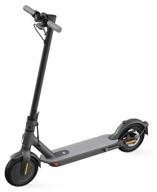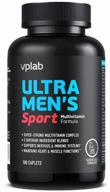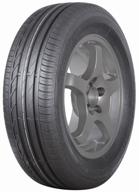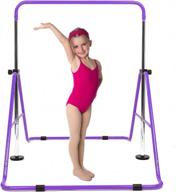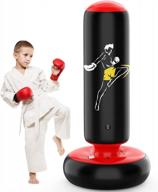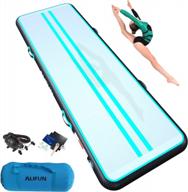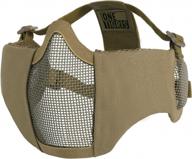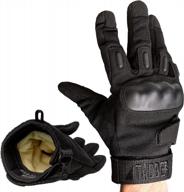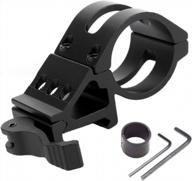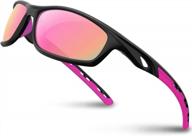How to find the right helmet size for your head?
Finding the correct helmet size is crucial for safety and comfort while riding. An ill-fitting helmet is not only uncomfortable but also compromises protection. Follow these steps to determine your ideal helmet size:
Measure your head
- Use a soft measuring tape to measure the circumference of your head about 1 inch above your eyebrows and ears.
- For accuracy, have someone else take the measurement while you look straight ahead.
- Round your measured size up to the nearest centimeter or 1/8 inch.
Refer to the manufacturer's sizing chart
Consult the specific helmet brand and model's size chart. Sizing can vary between manufacturers. Match your head measurement to the brand's sizing guide to find your approximate size.
Try it on
Place the helmet on your head and make these checks for fit:
- It should sit level on your head and low on your forehead.
- There should be no gaps between the pads and your head.
- Fastened, it should be snug but not too tight.
- There should be no pressure points inside the helmet.
Getting an accurate measurement and consulting sizing charts gives you a starting point. But the best way to find your ideal helmet size is to try several on until you find the right fit.
Similar products
How to adjust the harness for a secure and comfortable fit?
A helmet's harness plays a key role in stability, security and comfort. Follow these tips to properly adjust your riding helmet's harness:
Position the chinstrap
- The chinstrap should sit just under your chin when buckled.
- Adjust the strap slides so the chinstrap falls in the correct spot. Do not rely on tightening the strap alone to position it.
Adjust strap length
With the chinstrap buckled, make sure of the following:
- You can fit one finger between the strap and your chin, indicating a snug but not tight fit.
- No parts of the strap dig into your skin or press uncomfortably on your chin or neck.
- You can open your mouth fully without resistance.
Loosen or tighten each side independently until the length is right.
Top products in 🏒 Other Sports
Set strap angle
The chinstrap should meet the nape strap at a 90 degree angle under your ear for optimal security and comfort:
- If the chinstrap points forward, shorten the rear nape adjustment straps.
- If the chinstrap points rearward, lengthen the rear straps.
Another interesting products
Check fit while riding
The true test of harness fit is riding with it. Make minor adjustments as needed if you notice the helmet shifting or any discomfort. A properly fitted harness keeps your helmet stable without any pain or distractions.
Taking the time to properly adjust your helmet's harness ensures maximum safety, security and comfort in the saddle.
How to care for the helmet to maintain safety and extend its life?
With regular care and maintenance, a riding helmet can safely last 5 years or more. Follow these helmet care tips:
Clean the helmet and pads
- Wipe the helmet shell with mild soap and water to remove dirt and sweat.
- Remove removable comfort pads and wash separately with mild detergent.
- Allow all parts to fully air dry before reassembling.
Disinfect periodically
- Sanitize the lining and pads occasionally with an anti-bacterial spray made for helmets.
- Never use harsh chemicals like gasoline or solvents.
Avoid damaging elements
- Store your helmet away from direct sunlight, which can degrade the materials.
- Prevent it from getting wet when not in use.
- Do not pile heavy objects on top that could dent the shell.
Inspect for wear and tear
- Check for cracks, fraying or damaged padding before each use.
- Replace pads that are deteriorating or badly soiled.
Replace as recommended
- Replace your helmet after a major impact, even if no damage is visible.
- Adhere to manufacturer guidelines for replacement, typically every 5 years.
With proper care and regular replacement when needed, your riding helmet will provide reliable protection ride after ride.
How to recognize when it's time to replace your riding helmet?
Replacing your riding helmet at the right time is essential for safety. Here are signs it's time for a new one:
Impact damage
- Replace after any fall or impact, even if you don't see exterior damage. The foam liner may be compromised.
- Look for cracks, dents or deformation of the shell, chinstrap or padding.
Expired life span
- Most helmet manufacturers recommend replacement every 5 years due to material degradation and improvements in design and technology.
- Refer to your specific brand's recommendations.
Interior deterioration
- Look for cracking or crumbling of interior padding and liner materials.
- Make sure that stitching on comfort pads is intact.
Poor fit
- Replace if the helmet is too loose and shifts significantly during riding.
- Consider a new one if it feels too tight overall or creates pressure points.
Excess wear and tear
- Inspect for fading, hairline cracks or damage to outer shell.
- Look for frayed, loose or broken chin straps.
The 5 year replacement recommendation serves as a useful guideline. But it's equally important to proactively assess the condition of your helmet before each use. Staying vigilant will ensure you know when the time comes for a new riding helmet.
How To Choose The Right Size Troxel Sierra Horseback Riding Helmet?
What Is The Difference Between Troxel Sierra Horseback Riding Helmet Sizes?
Troxel Sierra Horseback Riding Helmet comes in different sizes to ensure a comfortable and secure fit. Here are the differences between Troxel Sierra Horseback Riding Helmet sizes:
What Is The Sizing Chart For Troxel Sierra Horseback Riding Helmets?
To determine the right size for Troxel Sierra Horseback Riding Helmet, follow these steps:
- Measure your head: Use a measuring tape to measure around your head one inch above your eyebrows or use a string to measure and then lay it out and measure it with a ruler.
- Check the sizing guide: Troxel provides a sizing guide to help you choose the right size for your head.
- Use the Troxel Conversion Chart: Use the chart to convert your measurement to hat size.
- Troxel Sierra Horseback Riding Helmet sizes range from XS to XL.
- Troxel Sierra Horseback Riding Helmet has a SureFitTM Pro fit system that adjusts to the size and shape of the rider's head for an unmatched level of comfort and stability.
- Most Troxel helmet styles come in XS and S sizes that will fit young riders.
- It's important to choose a helmet that is very comfortable on your head because if it's not, you are less likely to wear it.
Note that the conversion chart is a guide only and does not guarantee the fit of the helmet. Some people may have a unique head shape changing what size they need. Some helmets fit different shaped heads better than others.





